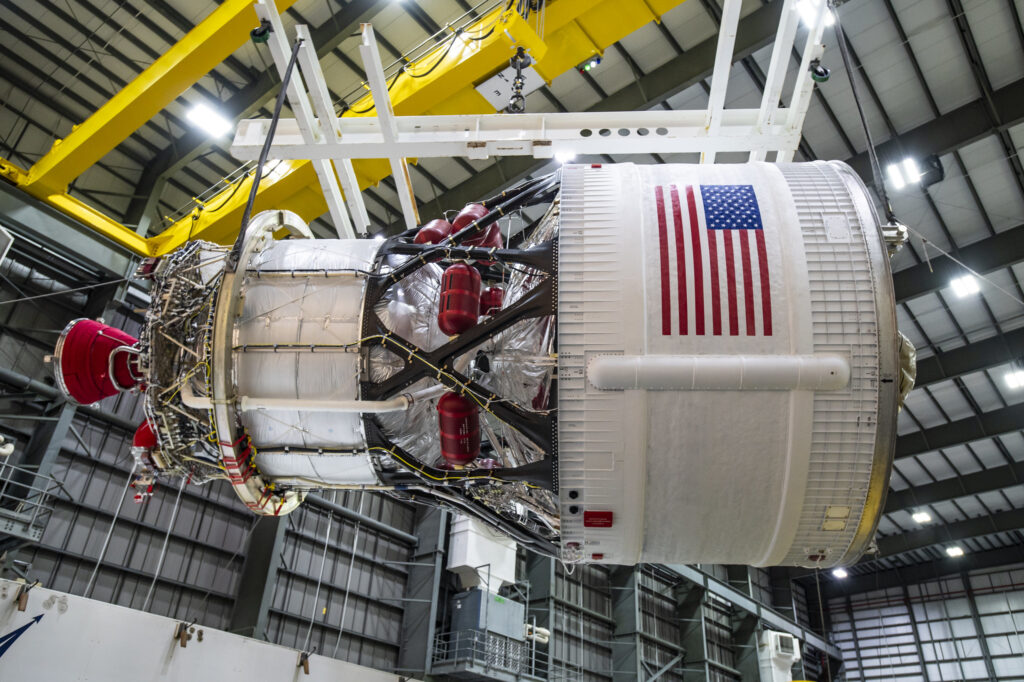The upper stage of the SLS rocket intended for the Artemis III mission was successfully delivered to Cape Canaveral. This is stated in a message published on the NASA website.

The SLS rocket consists of three main components: a pair of solid-fuel boosters (they are based on shuttle boosters), equipped with four RS-25 engines of the central stage (in the past these power units were also used on shuttles), as well as the ICPS upper stage (Interim Cryogenic Propulsion Stage).
The ICPS stage is manufactured by Boeing. It is a modified version of the upper stage used on the Delta IV Heavy rocket. Its length is 13.7 meters, diameter is 5 meters, it is capable of providing 110.1 kN of thrust. ICPS gives the SLS rocket the ability to launch up to 27 tons of payload on a flight path to the Moon.
In total, three copies of the ICPS stage were produced. The first one was used last year as part of the Artemis I mission. The two remaining stages will send the crews of the Artemis II and Artemis III missions to the Moon.
The stage delivered to Cape Canaveral will undergo a series of various checks and tests at the test stands of ULA (a joint venture of Boeing and Lockheed Martin), after which it will be transferred to NASA. At the moment, the launch of the Artemis III mission is scheduled for the end of 2025. But it is expected that in the near future, NASA will announce its postponement to a later date.
Artemis III will be the last mission to use ICPS. Starting with Artemis IV, the SLS rocket will receive a more powerful EUS (Exploration Upper Stage) stage, which will ensure the removal of up to 42 tons of cargo on the flight path to the Moon.
According to https://www.nasa.gov
Follow us on Twitter to get the most interesting space news in time
https://twitter.com/ust_magazine
